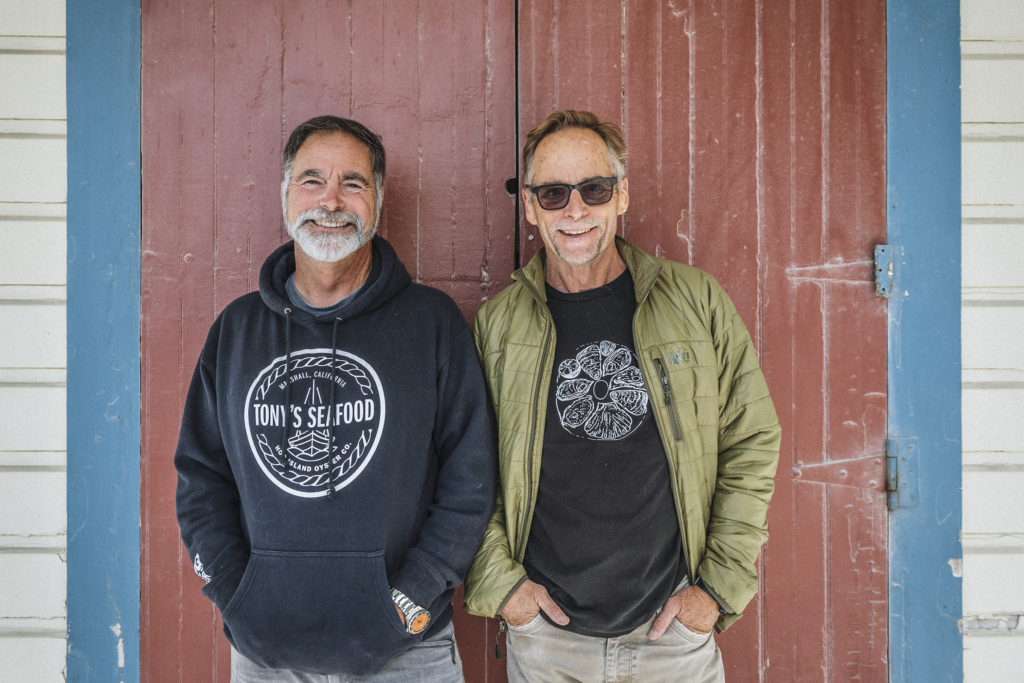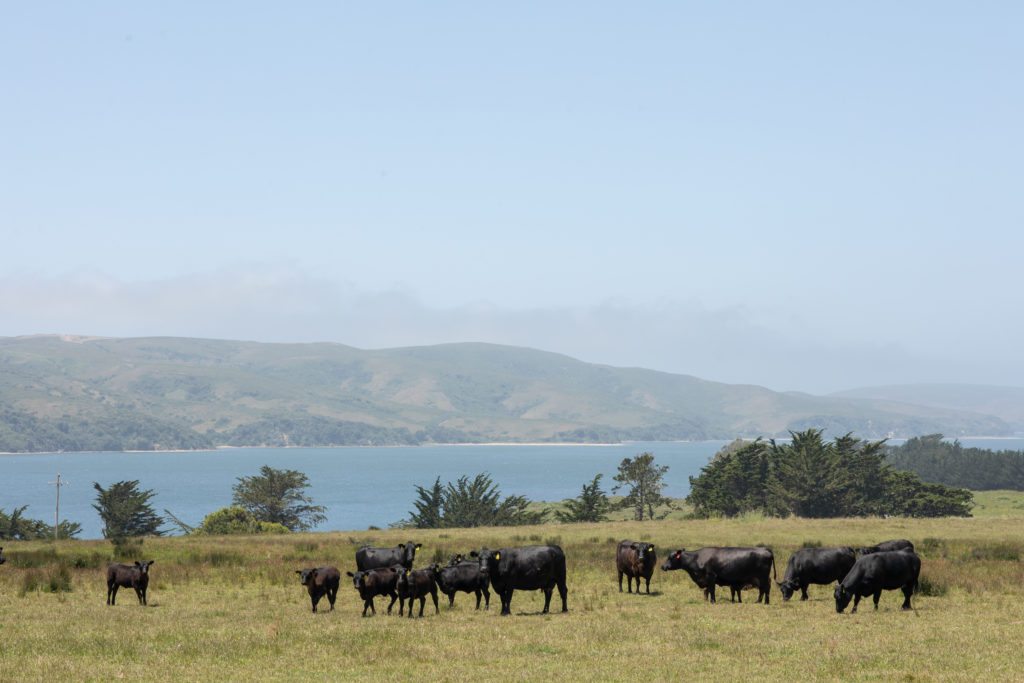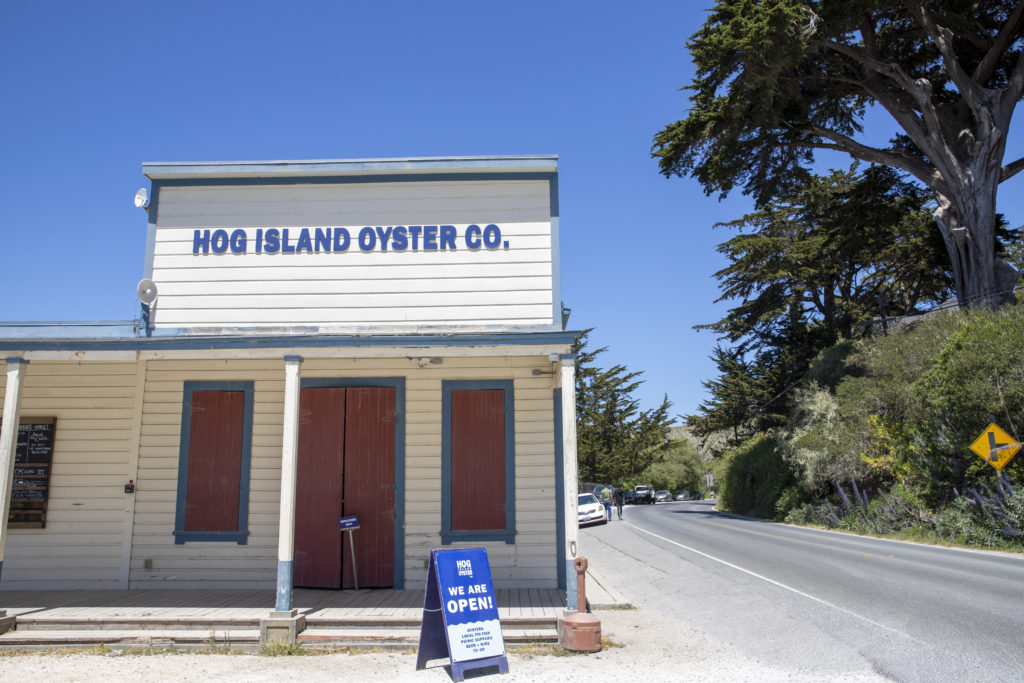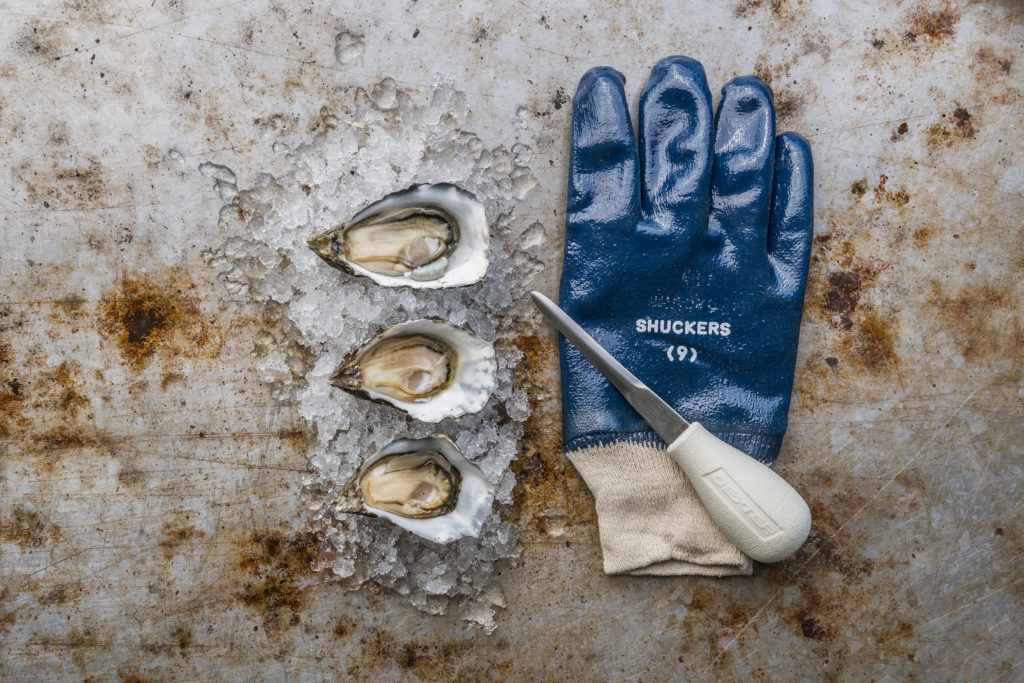Why the Latest MALT Agricultural Conservation Easement is Extra Special
June 2, 2021
MALT recently closed an agricultural conservation easement with Hog Island Oyster Company (Hog Island) and its 250-acre Leali Ranch. This particular easement is especially noteworthy for a number of reasons, including that it’s:
- The first MALT easement that includes a mariculture aspect.
- The first MALT easement to close since the COVID-19 pandemic turned so many things upside down.
- The first MALT easement in a long time that we fully funded ourselves, thanks to private donations from MALT supporters.
- A fantastic example of the circular production and consumption practices that MALT champions and wants to use to inspire food producers everywhere.
MALT CEO Thane Kreiner, Ph.D., talked with Hog Island Oyster Company co-founders John Finger and Terry Sawyer about their business, their approaches to food production and what the MALT easement means to them.
 John and Terry, co-founders of Hog Island Oyster Company.
John and Terry, co-founders of Hog Island Oyster Company.
Thane Kreiner: First of all, I’m a huge fan of your operations and how you work.
John Finger: That’s great to hear, Thane! When Terry and I started Hog Island Oyster Company nearly 40 years ago, we had no idea of what it would turn into.
Thane: For those who aren’t familiar with Hog Island, can you talk a bit about how you got started and some of the milestones of your journey so far?
Terry Sawyer: We like to say that we started off as marine biologists by day and oyster farmers by night. Our focus in the beginning was simply to cultivate the highest quality oysters possible, and to do it sustainably.
John: Sustainable food production is in our DNA. We’ve both always felt strongly that how food is produced makes a difference. Farming shellfish made sense to us because shellfish is such a sustainable protein.
Terry: Over the years we’ve experienced what we call reluctant growth. We first diversified within the oyster production process — optimizing how we hatch oyster seed, grow and harvest oysters, and shuck and sell them.
John: We took the farm to table concept, which is huge here in Northern California, and embraced a whole “bay to bar” philosophy, which included opening our own restaurants locally. Now we’re looking at even more ways to extend our continuous production and consumption practices.
 Hog Island’s oyster farm. Photo: Remy Hale
Hog Island’s oyster farm. Photo: Remy HaleThane: That’s one of the most interesting things about your operations: how you’re being so innovative about finding ways to use the byproducts and waste that happens with oyster farming, as well as branch out into companion activities, like growing food crops that enhance the oyster-eating experience.
John: I guess it’s time to answer that big unspoken question everyone always has, which is why would a bunch of oyster farmers own a 250-acre ranch?
Thane: OK, I’ll bite. Why?
John: We’ve known that we’re located in a very special place, here in Marin County. There’s so much beauty and bounty, between the sea and the land and the climate. It’s really a food production wonderland. What many people don’t appreciate is that as oyster farmers, we have to care deeply about the land adjacent to our operations, because everything that happens on land can affect the quality of the oysters we’re growing just offshore.
Terry: There’s a deep connection between terrestrial and marine agriculture. Farming and ranching, especially dairy farming, has a long and proud history in this area. When the Leali Ranch came up for sale, we saw it as a once-in-a-lifetime opportunity to expand our infrastructure and to protect this area so close to our farm and the bay.
 Cattle out on Leali Ranch. Photo: Paige Green
Cattle out on Leali Ranch. Photo: Paige GreenThane: So where did the idea of a MALT agricultural conservation easement enter the picture for Hog Island?
Terry: This piece of land could easily be threatened by development. You can just imagine a high-status estate overlooking the bay. And we had plans for using the land to grow things like organic lettuce row crops and lemon orchards. But all that takes capital.
John: Philosophically, people interested in protecting lands tend to either want to preserve the land like parks or to use it for agriculture and other sustainable businesses. We fall into the second camp. In that way, we share the same perspective as MALT. We believe strongly that agriculture can be done sustainably, but ranchers and farmers need help to do the right things. If the watershed is healthy, the bay is healthy.
Terry: Then when the COVID-19 pandemic hit and we had to shutter our restaurants, our business plummeted. We no longer had the cash reserves we’d been counting on. The MALT easement provided an infusion of capital that not only helped us survive the hit to our business, but also to enact more of our plans for expansion and improvement. We’ll use the MALT funds to extend our infrastructure, become more efficient — like installing 600 solar panels so we use less fossil fuel — and increase the number of oysters we can raise and sell.
 Hog Island Oyster Company off of Highway 1 in Marshall, CA.
Hog Island Oyster Company off of Highway 1 in Marshall, CA.Thane: These agricultural conservation easements involve complex and time-consuming processes, usually involving some combination of public grants and private donations. But to close the easement more quickly and make that capital available to Hog Island, and thanks to the generosity of MALT supporters, we opted to fully fund the transaction ourselves.
Terry: And we really appreciated that! Already, we’re starting to develop our plans for the Leali Ranch land, including things like developing new water sources for our future row crops.
John: We also plan to take advantage of MALT’s support through opportunities like the Stewardship Assistance Program and the new Drought Resilience & Water Security initiative.
Thane: I’m glad you brought up those programs. One of the reasons I was so excited to join MALT as CEO earlier this year is the potential for MALT to find new ways to support our easement partners. I also want MALT to provide a model for testing and perfecting new approaches to sustainable and regenerative agriculture, as well as the kinds of circular production and consumption practices that Hog Island is pursuing.
Terry: And of course, those concepts become even more important as we experience the effects of climate change. As an example, as oceans soak up more carbon dioxide, their chemistry changes and they become more acidic. Ocean acidification weakens oyster shells. As oyster farmers, we can not only document the science of the changes, and communicate these signals to policy makers and the public, but we can also adapt our practices to be more resilient to climate change. In our case, that has included designing above-ground hatcheries to protect young oysters from both predators and environmental stresses.
John: We also want to reduce our waste, so we’re experimenting with turning used oyster shells — as well as the seaweed that’s inevitably harvested along with the oysters — into cattle forage, compost, chicken feed supplements and food for human consumption.
 Hog Island’s sweetwater oysters. Photo: Remy Hale
Hog Island’s sweetwater oysters. Photo: Remy HaleThane: And let’s not forget the people side of the equation. Hog Island Oyster Company is an important employer in this region.
John: Before the pandemic, we had more than 300 employees, mostly in our restaurants. During the pandemic, most of those jobs went away, temporarily. We’re now building back our workforce, especially as our restaurants open up again. Plus, over time, we’ll be adding employees for our new land-based activities.
Terry: It’s also built into our business philosophy that we offer our employees safe and fair working conditions, the training they need to progress in their careers, and decent pay. Every employee that works 20 hours or more a week gets full health insurance, and our lowest-paid entry-level positions start at more than $20 an hour.
John: It’s important to us to do business the right way, at all levels.
Terry: In the end, if you ask us what business we’re in, it’s not the oyster business or even the food business. We’re in the people business. Period.
Thane: Thank you both so much for taking time to talk with me today. I’m so inspired by what you are doing at Hog Island Oyster Company, and I’m so glad that MALT will have a chance to play a role in your success. I can’t wait to see what you’re able to achieve in the future.